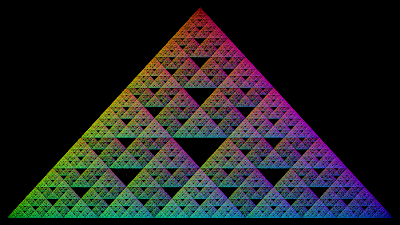As I was thinking more about this, what I also mentioned in an earlier blog post of mine (about polyhedra), I realized that I cannot find interesting new polyhedra that are not yet discovered, and somewhat regular, and maybe contain the regular heptagon. For example, I was thinking about three different regular heptagons ABCDEFG, HIJKLMN, OPQRSTU in 3 dimensions where A=H, B=I, O=K, P=J, Q=C, R=D. Then I conjectured that this way of putting together regular heptagons (so that at each edge, two-two heptagons should meet this way, by this angle) could be continued (in a way that these heptagons can intersect), but would end after some time, and the result (all of the points and the heptagons) would make an interesting (probably concave) new polyhedron. Whether or not the process ends, I planned to check by computer (approximately).
However, today I approached the problem differently. I asked the question: on the plane, can regular heptagons be put together at their edges, so that two-two regular heptagons should meet at each edge, and in a finite part of the plane there should be a finite number of heptagons? Then I realized that there will be 14 edges around a vertex of a heptagon, and the angles between these edges will be π/7. The angles of the heptagon are (2*π)*5/14, or π*(7-2)/7, by the way (and 5 and 14 are relatively primes). Then I found that two adjacent edges (around a vertex) will form a triangle whose angles are (π/7, 3π/7, 3π/7) and therefore, the third edge of this triangle will be shorter than the edges of the heptagons. However, these shorter segments are also around a vertex of the heptagons, connecting other vertices of the heptagons to it, and there are again 14 of them, with angles π/7 between them. We can do this process again and again, getting smaller and smaller segments. Therefore, there should be an infinite number of vertices, if we try to put together heptagons on a part of the plane (even if they intersect).
Well, it has come to my mind that I could try to reason somewhat like this (by analogy), about heptagons in the 3D space (or on a spherical surface). Of course, this problem is harder, so I shall suppose that the edges of the heptagons are the smallest distances between two points of the supposed resulting polyhedron. Otherwise I may find smaller and smaller segments by a way analogous to the previous reasoning, and conclude that the process of forming the polyhedron will not end. Then I realized that it is not possible for 3 or 4 regular heptagons to meet at one vertex. It is possible for 5 or more heptagons to meet at one vertex, if these heptagons intersect, and also intersect with the diagonals of the pentagon (or more) that is projected around this vertex. However, 6 or more heptagons meeting at one vertex will make smaller segments (as distances between vertices) than the edges (sides) of the heptagons. The only possible way seemed to be 5 heptagons meeting at one vertex, but I checked this possiblity and it looked impossible. Of course, all of this reasoning of mine is not Mathematically precise or perfect, but it is enough for me to reject and cancel further work on this topic, as my time is very precious.
What's next for me in Mathematics? I think I'll train myself in Number Theory (both by reading books about it and by solving KÖMAL exercises of type B, or later even of type A). (Fortunately, I have a lot of books and ebooks about Mathematics now, I do not need more for a long time.) Then I'll probably try to prove or disprove the Beal conjecture or the Goldbach conjecture... but if Mathematics remains hard for me, maybe I'll try to get rich quick by other means, too (e.g. writing books or composing music by LMMS).











